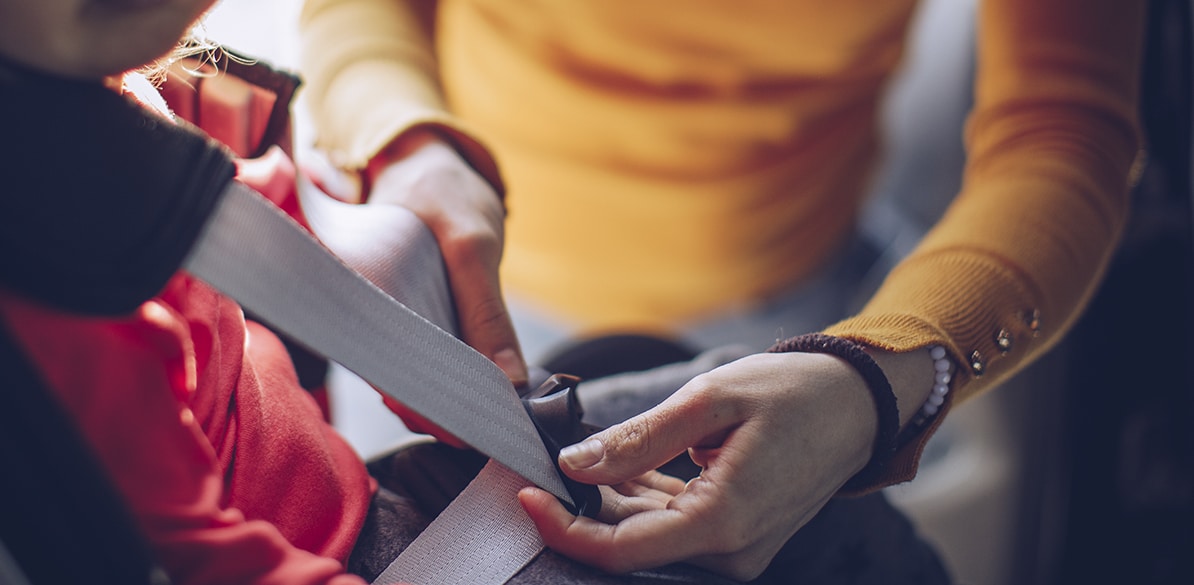At what height should we place the harness? And the seat belt?
Let’s look at this question from a technical point of view

Road Safety
When we talk about the way to install the seats, we have to differentiate between rear-facing seats with harnesses, forward-facing seats with harnesses, boosters with backrests that use the car seat belt, and boosters without backrests.
Let’s start with rear-facing car seats with harnesses. And let’s use dolls to illustrate the situations. Let’s imagine that the doll is not wearing a harness. The child seat will tend to stay still because it is restrained, while the doll will slide forwards along the backrest. Now let’s think about the best way to hold the doll in. This would be a harness that acts as quickly as possible. If we place the harness over the shoulder, the doll will tend to move forward until it encounters the harness. This will make the braking action more abrupt and less effective. Ideally, the harness should already be restraining the shoulder at the time of forward movement and the body should not be able to accelerate without restraint. The harness should therefore sit at shoulder height, or even a little lower than the shoulder.
Let’s move on to forward-facing chairs. And do the same exercise. What would happen if we didn’t put the harness on the doll? Well, as the child seat is restrained, it will tend to stay still while the dummy will move forward at the same speed as the car was moving before the collision. The movement is therefore completely horizontal.
If we now attach the harness to the doll, the movement will be the same, horizontally forward. If we place the harness lower than the shoulder, it will create a “shoulder roll” that will press the collarbone down, creating an unwanted load and, as the harness will eventually stretch, it will increase the displacement of the head, which we also do not want. If we place it at the same height as the shoulder, the pressure on the clavicle and the displacement will be reduced, but as the child seat sits on top of the car’s own seat, which has a tilt of between 5º and 10º, the relative position of the anchor point with respect to the force derived from the collision will again cause the position of the harness to be below the shoulder.
In this case, it is best to position the harness 1 to 2 cm above the doll’s shoulder to compensate for the angle of the car’s seat, generating the most effective restraint possible.
Now we are going to look at boosters with backrests. In this case, the situation is similar to forward-facing chairs with harnesses, but the product design is different and, therefore, the restraint system is also different. In this case the belt needs space to adapt to the position of the shoulder, so the usual way to achieve good retention is to place the belt about 2 to 3 centimeters above the shoulder, which should guarantee the best possible retention.
Finally, we can look at backless boosters. In this case, for the seat belt to be as effective as possible, it should pass across the center of the collarbone, without the belt touching the neck, but it shouldn’t be placed too far towards the corner of the shoulder either, as in the event of a collision the seat belt would move downwards, leaving the chest area without restraint.
In summary, the child car seat, its orientation and the way in which the child is secured determine the most effective way of restraining the child.
